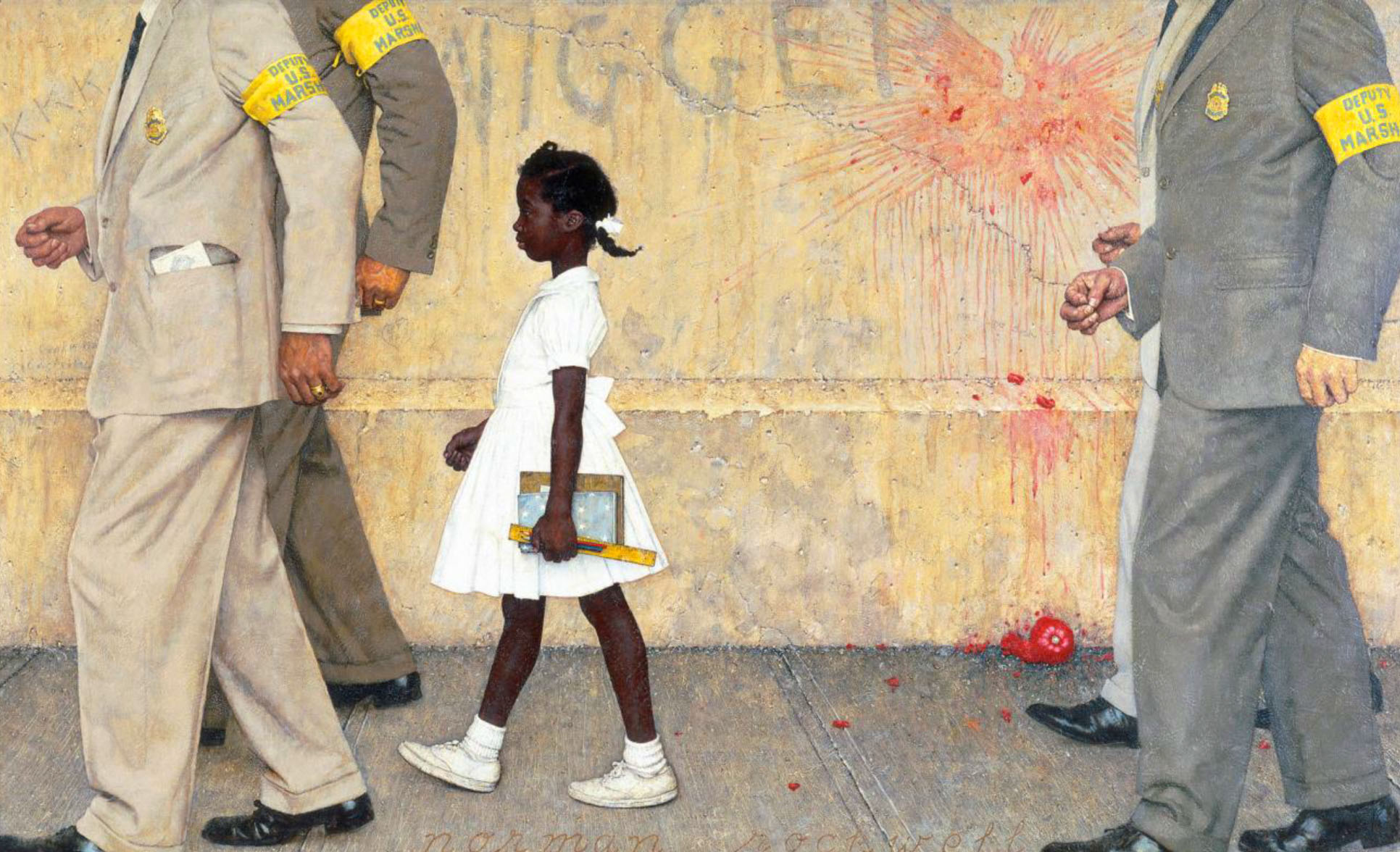FACES IN THE CROWD
By Tom Lawrence
In every generation and in every society there are those who make a difference without the receipt of either recognition or fame serving as the motivation for their actions. Mostly, they are just plain folks leading everyday lives who find themselves thrust into a situation that demands courage, integrity and solid common sense. At a crucial moment in their existence these average citizens simply rise to the occasion. They do what needs to be done, then fade back into ordinary lives. These special people deserve our thanks and respect. Here is an example of one such person.
Ruby Bridges

On May 17, 1954, the U.S. Supreme Court handed down a landmark decision in a matter known as Brown v Board of Education, which made State sponsored segregation illegal under the Equal Protection Clause of the Fourteenth Amendment of the U.S. Constitution. The concept of separate but equal would no longer apply to schools all across the South.
In September of that same year, Ruby Nell Bridges was born in Tylertown, Mississippi. Ruby’s parents, Abon and Lucille, worked as sharecroppers on the farm that Abon had grown up on. The Bridges were hardworking people who were not politically active in the civil rights movement.
Equal opportunity was now the law of the land, but implementation of that law proved to be extremely difficult. But the segregation barrier in higher education fell in 1956, when Authorine Lucy was admitted to the University of Alabama, and Ruby Bridges had just turned two years old. The first high school in the South admitted black students in 1957, when President Eisenhower ordered the 101st Airborne to escort nine black students to class at Little Rock’s Central High. Ruby Bridges was now three years old.
In 1958, Abon and Lucille decided to leave the farm, and moved to nearby New Orleans to seek a better life for Ruby. Abon got a job as an attendant at a gas station, and Lucille took on domestic work.
Louisiana had implemented a law that required black children to pass a test to determine their ability to attend an all-white school, and responding to a call by the local NAACP, Abon and Lucille reluctantly agreed that Ruby would take the test. She was one of six black children to pass the admission examination.
Ruby was assigned to all white William Franz Elementary School for the school year of 1960. The other five children, for one reason or another, either stayed in their existing school, or were assigned to other schools, leaving Ruby to attend William Franz by herself. Abon didn’t want Ruby to be exposed to the expected white backlash, but Lucille convinced him that it was the right thing to do, both for Ruby and to further the cause of black rights.
On November 14, 1960, Ruby was escorted to William Franz Elementary School by a U.S. Deputy Marshall, making her the first black child to attend an all-white elementary school in Louisiana. Ruby described the scene at the school as very much like Mardi Gras — “throngs of shouting people throwing things.” Once Ruby was admitted to class, many of the white parents pulled their children out of the school, and all but one of the white teachers refused to teach in an integrated institution. The one exception was Barbara Henry, a native of Boston Massachusetts, who became Ruby’s teacher for the school year.

Ruby’s first year at William Franz saw her segregated within the school. She was taught one on one, ate her meals alone, and had no interaction with the white students. In further retaliation against her admission to the school, her parents, Abon and Lucille lost their jobs, they were refused service at their local grocery store, and her grandparents were evicted from their farm in Mississippi. Although there was some community support — both black and white — most of her first year was filled with angry racial slurs, threats and protests against her attendance. Ruby persevered however, and stuck it out, and she won the respect of not only her teachers, but also the Marshalls who were assigned to protect her. Former United States Deputy Marshal Charles Burks later recalled,
“She showed a lot of courage. She never cried. She didn’t whimper. She just marched along like a little soldier, and we’re all very very proud of her.” American artist Norman Rockwell immortalized Ruby’s first day with his painting, The Problem We All Live With, which graced the centerfold of Look magazine in 1964.
The events of that November day in 1960 set Ruby Bridges on a path of service that has lasted throughout her life, but the quiet courage of a six year old child remains an inspiration to us all.

For more by Tom Lawrence: www.tomlawrenceblog.com
The photo of the 1954 Supreme Court is licensed under CC By 4.0 — linked to Brown v. Board of Education – Wikipedia, the free encyclopediaen.wikipedia.org 555 × 380Search by image
On May 17, 1954, these men, members of the U.S. Supreme Court, ruled unanimously that racial segregation in public schools is unconstitutional.
The photo of Ruby Bridges at William Franz Public School is is licensed under CC By 4.0 — linked to en.wikipedia.org 600 × 457Search by image U.S. Marshals escorted Bridges to and from school.
The photo of the Norman Rockwell painting, is licensed under CC By 4.0 — linked to www.nola.com2048 × 1263Search by image… ‘The Problem We All Live With’ depicts 6-year-old Ruby Bridges, who was the first African-American child to attend an all-white elementary school in Louisiana



I wonder if any of the bigots that vented their anger and ignorance at ruby and her family ever recognized their dismal behavior, and felt ashamed of their actions?
Who’s to say. Hopefully time has softened people’s attitudes. I know it has softened mine.